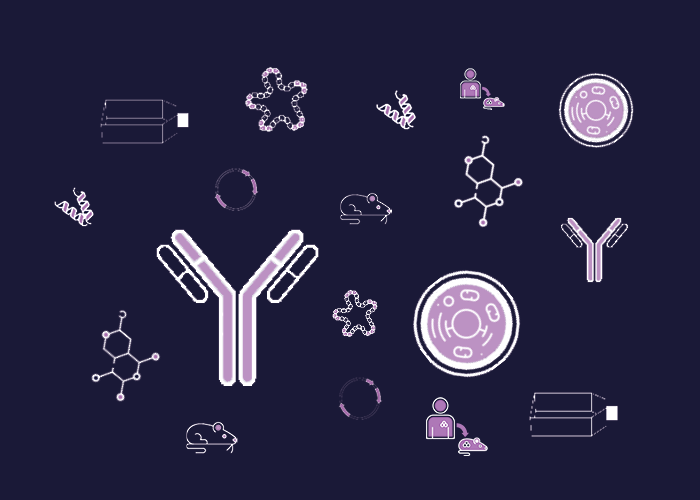
Cat. #153600
KPC Cell Line (mixed genetic background)
Cat. #: 153600
Sub-type: Continuous
Unit size: 1x10^6 cells / vial
Availability: 8-10 weeks
Organism: Mouse
Disease: Cancer
Model: Transgenic
£800.00
This fee is applicable only for non-profit organisations. If you are a for-profit organisation or a researcher working on commercially-sponsored academic research, you will need to contact our licensing team for a commercial use license.
Contributor
Inventor: Jennifer Morton
Institute: Cancer Research UK, Glasgow Beatson Institute
Primary Citation: Morton et al. 2010. Gastroenterology. 139(1):292-303. PMID: 20303350
Tool Details
*FOR RESEARCH USE ONLY (for other uses, please contact the licensing team)
- Name: KPC Cell Line (mixed genetic background)
- Alternate name: PDAC cell line
- Cancers detailed: Pancreatic cancer ; Pancreatic ductal adenocarcinoma
- Research fields: Cancer;Drug development
- Tool sub type: Continuous
- Organism: Mouse
- Disease: Cancer
- Model: Transgenic
- Conditional: No
- Description: This KPC cell line represents a useful model of pancreatic ductal adenocarcinoma. This cell line was established from a popular KPC mouse model (Hingorani et al. 2005). It has a mixed genetic background. Details on source mouse model The KPC mice from which the KPC cell is derived, are an establish clinically relevant model of PDA, that develop many of the key features of observed in human PDA such as pancreatic intraepithelial neoplasia. The KPC mouse contains a conditional point mutation in the transformation related protein 53 gene (TP53R172H), and a point mutation in the KRAS gene (KRASG12D) both of which generate non-functional proteins. A lox-stop-lox termination sequence is encoded upstream of both mutated genes to prevent expression in the absence of Cre recombinase. PDX1 (pancreatic and duodenal homeobox 1) is a transcription factor necessary for pancreatic development. The PDX1 promoter enables expression of Cre recombinase in acini, islet and duct cells of the pancreas. Cre-mediated recombination excises the two lox-stop-lox termination sequences and enables expression of both oncogenes: KRASG12D and TP53R172H in pancreatic tissue. Tissues not expressing Cre recombinase remain functionally heterozygous of the KRAS and TRP53 loci. KPC cell line The KPC cell line was derived from a KPC model that has a mixed genetic background. This cell line retains the mutations seen in the parental KPC murine model. This KPC model can be used for PDA modelling, biomarkers investigation, genetics, and metastasis studies as well as drug discovery and development.
- Biosafety level: 1
- Additional notes: These cells are from mice with a mixed genetic background
Target Details
- Target: TP53, KRAS
Applications
- Application notes: These cells are from mice with a mixed genetic background
Handling
- Format: Frozen
- Growth medium: DMEM +10% FCS, 1% L-Glut and 1% Pen/strep. Revival might be slow.
- Temperature: 38 ° C
- Unit size: 1x10^6 cells / vial
- Shipping conditions: Dry ice
- Storage conditions: Liquid Nitrogen
- Mycoplasma free: Yes
Related Tools
- Related tools: KPC Cell Line (C57/BL6 genetic background)
References
- Li et al. 2014. Gastroenterology. 146(5):1386-96.e1-17. PMID: 24462734.
- Morton et al. 2010. Gastroenterology. 139(1):292-303. PMID: 20303350
- Hingorani et al. 2005. Cancer Cell. 7(5):469-83. PMID: 15894267.




